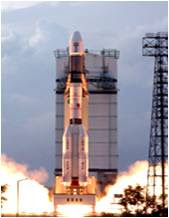Types of Satellite Orbits
Satellite
orbits are mainly classified into three based on the satellite's position
relative to Earth's surface.
First one is called Geostationary
Orbits or Geosynchronous or Synchronous orbits. In this orbit the satellite is always
positioned over the same spot on Earth.
Geostationary
Orbits
Geostationary
satellites are positioned in a band along the equator, at an altitude of about 35,786 km
/ 22,223 miles. Television, communications and weather satellites use
geostationary orbits.
Second
types of orbits are called Asynchronous Orbit.
This orbit is much lower than geostationary orbits. Satellites in asynchronous
orbit will pass overhead at different times of the day. The space stations and
many other satellites are positioned in an asynchronous orbit at various altitudes depending of the application of
satellite.
Asynchronous Orbit
Third
type of orbit is called Polar Orbit. In
polar orbit, the satellite generally flies at a low altitude. The satellite in
this orbit passes over the planet's poles on each revolution.
Polar Orbit
Polar Orbit
The
polar orbit remains fixed in space and Earth rotates inside the polar orbit. As
a result almost all part of earth passes under a satellite in a polar orbit and
satellites in polar orbits achieve excellent coverage of the planet. They are often used for remote sensing satellites.
















